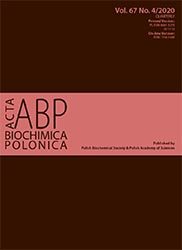Growth response and metabolic effects of growth hormone therapy in appropriate-for-gestational-age growth hormonedeficient children in relation to birth size and gestational age: A preliminary study
Abstract
The aim of the study was to investigate the influence of birth weight (BW), birth length (BL) and gestational age (GA) on growth pattern and metabolic profile in appropriate-for-gestational-age (AGA) growth hormone-deficient children before and during recombinant human growth hormone (rhGH) therapy. Forty children with isolated idiopathic growth hormone deficiency underwent auxological and biochemical assessment at baseline and after 6 and 12 months of rhGH therapy. Biochemical analysis included: insulin-like growth factor I (IGF-I), adiponectin, resistin, fasting glucose, fasting insulin, total cholesterol (total-C), low-density lipoprotein cholesterol (LDL-C), high-density lipoprotein cholesterol (HDL-C), triglycerides (TG) and glycated haemoglobin (HbA1c). There was a tendency for positive association between BW and baseline height standard deviation score (SDS). GA correlated with baseline weight SDS (p=0.019) and BMI SDS (p=0.039). GA was associated with baseline fasting glucose (p=0.031), fasting insulin (p=0.027), HOMA-IR (p=0.010) and QUICKI (p=0.016). BW correlated with baseline HbA1c (p=0.032). After the initiation of rhGH therapy we did not find any significant relationships between birth size parameters or GA and metabolic profile of the studied children. In conclusion, our results suggest that AGA GH-deficient children born with higher birth size parameters and higher GA had better first-year growth response to rhGH therapy and better baseline metabolic profile, especially parameters of carbohydrate metabolism. In order to optimize the effects of rhGH therapy, higher rhGH doses should be considered in those GH-deficient children who were born with lower birth size and GA.
Acta Biochimica Polonica is an OpenAccess quarterly and publishes four issues a year. All contents are distributed under the Creative Commons Attribution-ShareAlike 4.0 International (CC BY 4.0) license. Everybody may use the content following terms: Attribution — You must give appropriate credit, provide a link to the license, and indicate if changes were made. You may do so in any reasonable manner, but not in any way that suggests the licensor endorses you or your use.
Copyright for all published papers © stays with the authors.
Copyright for the journal: © Polish Biochemical Society.


